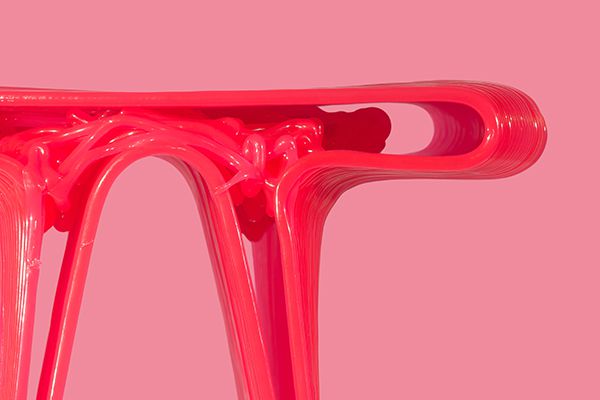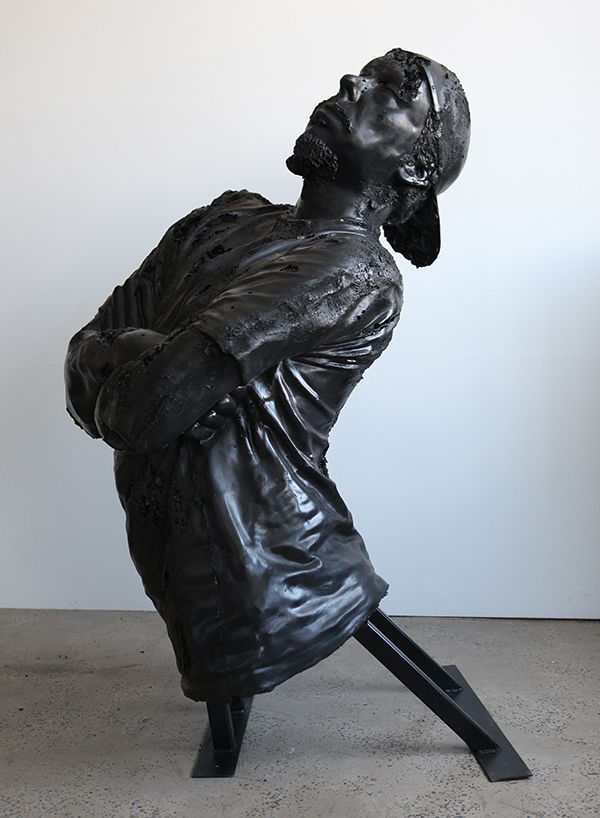Can 3D printing change our lives? What impact could it have on the way we live in the future? Rebecca Gross reports.

May 16th, 2016
The Australian Design Centre (ADC) in collaboration with Western Plains Cultural Centre has opened it’s latest exhibition Shapeshifters: 3D Printing the Future in Sydney, the second venue on a two-year national tour. The exhibition showcases the work of artists, designers and practitioners using this rapidly evolving technology and their broad application of 3D printing to jewellery, architecture, sculpture and prosthetics.
The exhibition not only explores the effect of digital technology on their practice and profession, but it encourages visitors to think about how they could use 3D printing in their own lives. 3D printing is an additive manufacturing process in which material is layered to form a three-dimensional object, effectively turning a line of code, CAD model, or as digital artist Lukasz Karluk demonstrates, a verse of music into tangible form. Designer and craftsperson Cinnamon Lee says that this additive rather than subtractive process of fabrication has “completely changed the parameters.”
On display is furniture and industrial designer Ryan Penning’s Percy Stool, which demonstrates the reality of 3D-printed furniture and his exploration of algorithmic design and robotic fabrication; the world’s first 3D-printed prosthetic jaw led by bioengineer and senior lecturer Dr David Ackland, which has changed the lives of more than 20 patients; Louis Pratt’s King Coal sculpture with a mould that took 2000 hours of printing; and XYZ Workshops’ inBloom, of the world’s longest 3D-printed dresses made from desktop manufacturing.

Louis Pratt’s King Coal sculpture.
3D printing allows makers to be more experimental and has been likened to a third-wave industrial revolution in which mass customisation will replace mass production. “3D printing enables the customisation of objects,” says ADC director Lisa Cahill. “There will be the opportunity to design for yourself exactly what you want, although more likely to order customised furniture than to print it at home.” Pennings agrees that shared and distributed systems are a realistic future, however, “there will be a difference in how 3D printing is realised in the future because the technology is advancing at such a fast rate,” he says. Next semester the designer will be teaching at RMIT and encouraging students to explore how to design products for robotic fabrication, including 3D printing systems.
Shapeshifters is on display in Sydney until 20 July 2016 before it moves to metropolitan and rural centres around Australia. A selection of digital examples are presented in addition to the physical works, as well as a series of public workshops run by Modfab for those interested in learning more about 3D printing. “It’s certainly becoming a technology that’s available and anyone can use,” says Cahill. “Australia has a high take-up of new technology so 3D printing will likely follow the trend.”
Australian Design Centre
australiandesigncentre.com
A searchable and comprehensive guide for specifying leading products and their suppliers
Keep up to date with the latest and greatest from our industry BFF's!

In the pursuit of an uplifting synergy between the inner world and the surrounding environment, internationally acclaimed Interior Architect and Designer Lorena Gaxiola transform the vibration of the auspicious number ‘8’ into mesmerising artistry alongside the Feltex design team, brought to you by GH Commercial.

The Sub-Zero Wolf showrooms in Sydney and Melbourne provide a creative experience unlike any other. Now showcasing all-new product ranges, the showrooms present a unique perspective on the future of kitchens, homes and lifestyles.

Channelling the enchanting ambience of the Caffè Greco in Rome, Budapest’s historic Gerbeaud, and Grossi Florentino in Melbourne, Ross Didier’s new collection evokes the designer’s affinity for café experience, while delivering refined seating for contemporary hospitality interiors.

Savage Design’s approach to understanding the relationship between design concepts and user experience, particularly with metalwork, transcends traditional boundaries, blending timeless craftsmanship with digital innovation to create enduring elegance in objects, furnishings, and door furniture.

Gray Puksand’s construction-focused facility at TAFE NSW responds to the critical need for a resilient Australian construction industry.

In our series spotlighting aficionados across the design industry, we spoke with Alexandra Guglielmino, who leads the Art Advisory team at Bluethumb Art Gallery.
The internet never sleeps! Here's the stuff you might have missed

We spoke with Jeffrey Wilkes of WILKESDESIGN about the John Portman-designed building, which has been infused with touches of local culture and colour.

Archie Moore’s kith and kin unveiled in the Australia Pavilion at the 60th International Art Exhibition of La Biennale di Venezia.